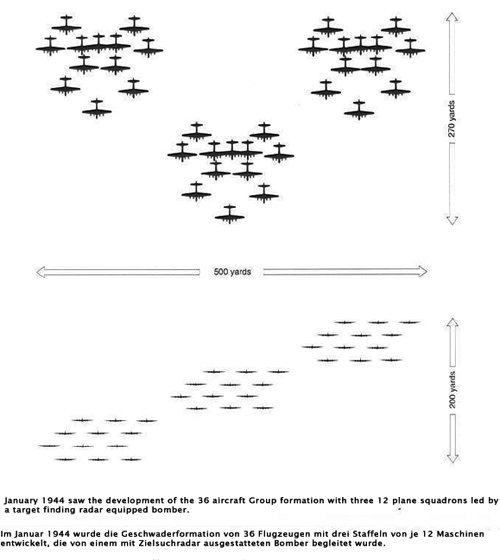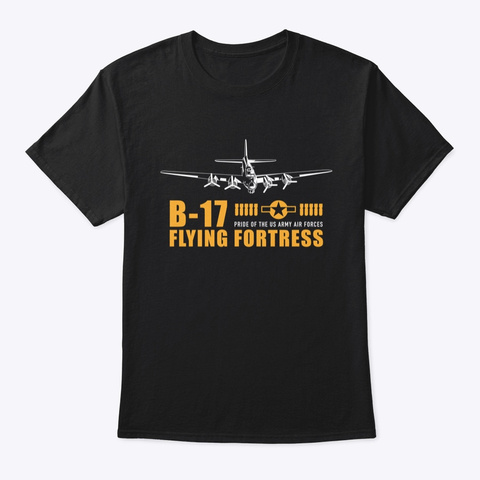B-17 Bomber Flying Fortress – The Queen Of The Skies Flying in formation
 English
English Deutsch
Deutsch
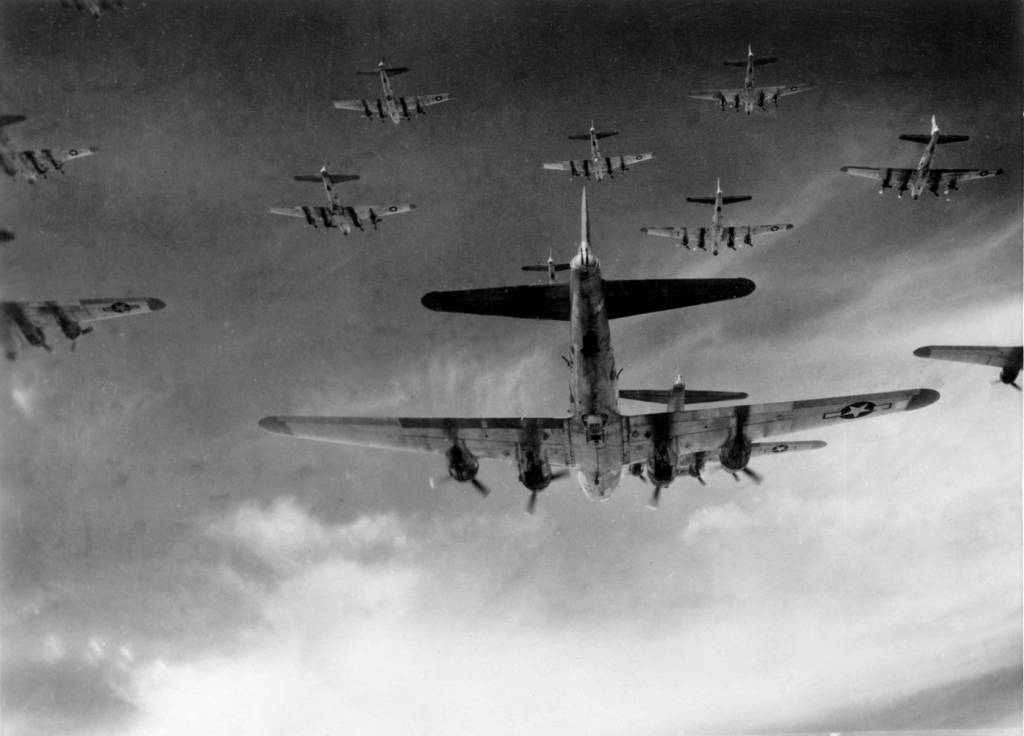
Heavy bombers flew in formation because, that was the most effective tactics against the enemy flak and fighter defense. In a survey in 1943, it was discovered that just over half of the bombers shot down by the Germans during attacks on target in Europe, were those that to leave the main formation. Geting into formation took up a lot of time and effort, used up a good percentage of valuable fuel and increased the possibility of pilot fatigue. The procedure for getting a Group into correct formation also took up an hour’s flying time but mission planners at US Air Force knew that the procedure was essential. Between 1942 and 1945 a number of ideal formations were worked out and modified.
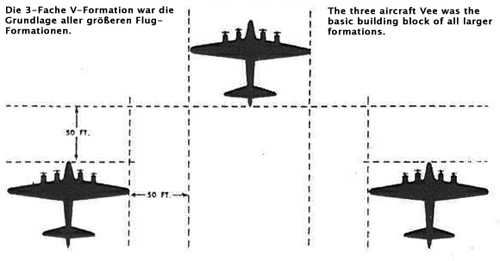
The B-17 usually formed up abouve the cloud layer (or undercast) using a radio beacon system called “Buncher” or “Splasher”. The three plane Vee shape was the basic element of all formation flying but the bumber of Vees in a Squadron/Flight and the number of squadrons in a Group varied as tactics changed over time.
The US 8th Air Force developed this system to allow 36 bombers to form up above the clouds. A ‘Buncher’ signal was emitted by a radion beacon around which the bombers would circle for an hour while every flight got into the air.

Different formations
In August 1942, when the US 8th Air Force began its campaign, it flew in squadrons made up of 6 aircraft with each plane about 100 feet away from the next. The aim was to strike a balance between tight defensive firepower and the difficulty for pilots of flying in formation. Distance were calculated so that a single flak burst between two planes could not damage both aircraft severely. However, it was soon realized that 6 spread out bombers would not be strong enough to repel German fighters.
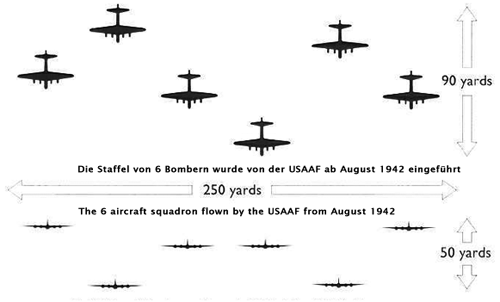
By September 1942 a new tactic was devised: two nine plane squadrons flying in 18 plane Groups. The second squadron flew 500 feed above and behind the first. This was a much tighter formation but very difficult to control in turns when the outside aircraft were prone to lose contact with the leader.
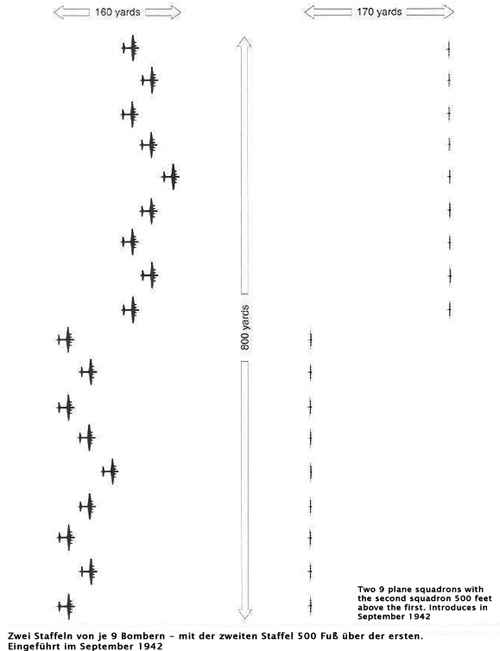
December 1942 saw the advent of three 6 plane squadrons making up the 18 aircraft Group with bombers stacked towards the sun and the lead squadron at the centre between a high and low squadron. This formation made goog use of defensive armaments of the B-17 Group.
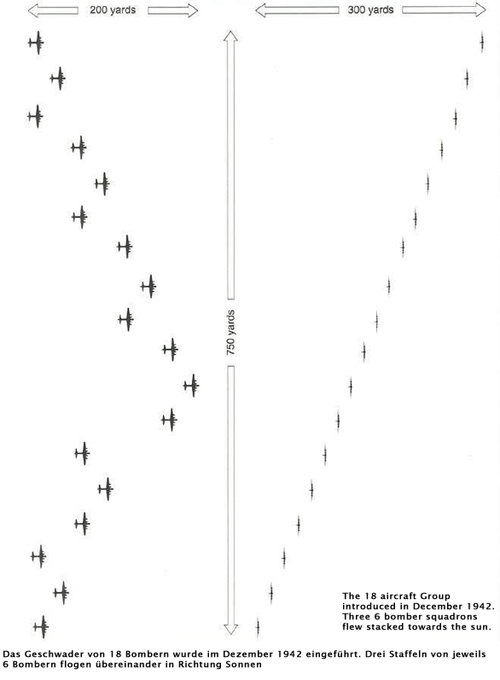
As the US 8th Air Force bomber fleet grew in size it adopted a 4 Bomber Group formation called “Javelin”, with each Group (18 planes) following the other at one and a half mile intervals stacked towards the sun. This made it difficult for enemy fighters to attack the rear most aircraft of the Group but it also meant that squadrons at the back had great difficulty keeping in formation.
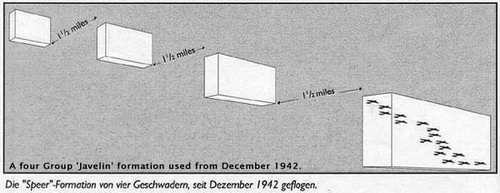
February 1943 saw the introduction of the “Wedge” formation: the centr Group led wuth the top and bottom Groups ranged in echelon in opposite directions. This 54 aircraft Combat Wing formation was 1.3 miles wide, and 0.3 miles from front to back. Although it allowed better supporting firepower between aircraft, squadrons and Groups, it was still difficult to maintain position in a turn.
In April 1943, the Combat Wing formations were made tighter with three aircraft Vees stacked in one direction and squadrons stacked in opposite directions. This “Tucked-In” Wing formation, as it was called, gave more concentrated firepower between squadrons and planes.
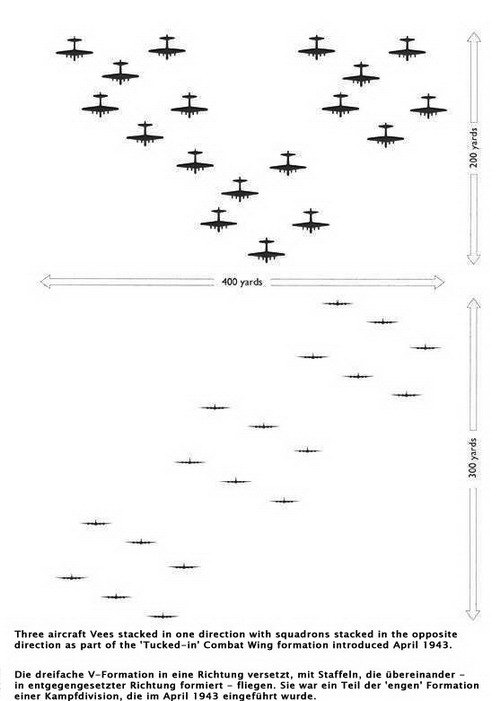
By the end of 1943, with the development of long-range fighter escort and radar aid, the formation system was used much less for defensive firepower. 12 aircraft squadrons flew in 3 squadron Groups with each Group spread out at 4 mile intervals. This formation was used seccessfully until the end of the war.
